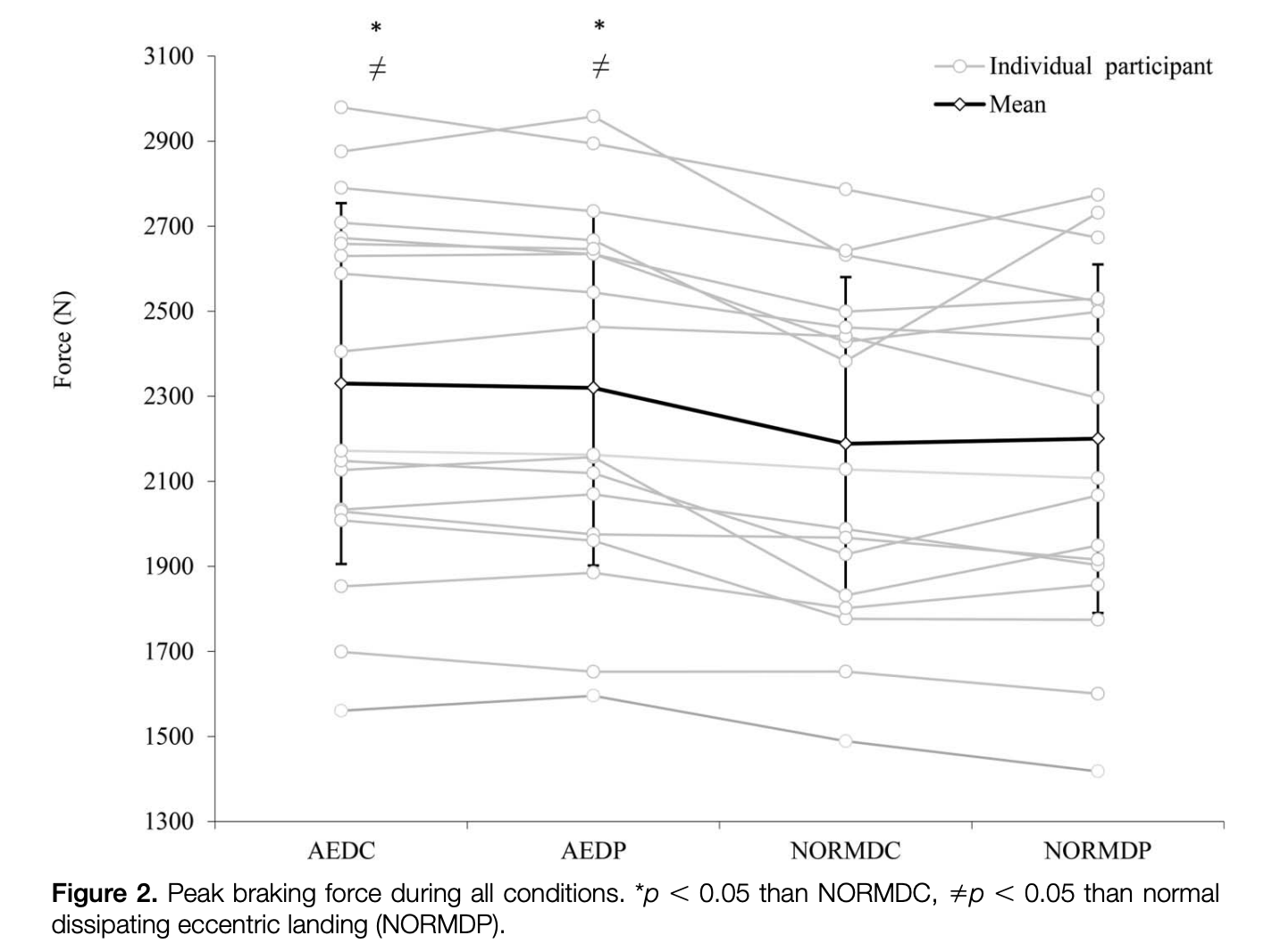Coaches often use verbal cues to drive movement changes, but more exploration is needed to understand how these cues impact braking and jump performance.
Understanding how to cue athletes better can directly improve power, deceleration ability, and change of direction performance.
This study aimed to test if "accelerated eccentric" (AE) cues (telling athletes to move fast downward and brake hard) could enhance the braking and propulsion phases of a countermovement jump (CMJ).
Can telling an athlete to move faster downward and brake harder actually lead to better jumping performance and stronger braking forces?
What Did the Researchers Do?
Study Design
18 strength trained men (average age: 26 years; 5.8 years lifting experience) were randomized, within-subject crossover design.
Conditions
- NORMDC: Normal cue + stiff landing
- NORMDP: Normal cue + soft landing
- AEDC: Accelerated eccentric cue + stiff landing
- AEDP: Accelerated eccentric cue + soft landing
Cues
- AE cue: “Fast down, max brake, jump high and fast”
- DC landing: “Stick the landing” (decelerate fast)
- DP landing: “Absorb the floor” (decelerate in your own time)
Measured Variables
Jumps were performed on force plates with the following metrics examined:
- Braking phase time
- Peak and mean braking force
- Braking impulse
- Peak propulsion force
- Jump height
- Landing forces (limited reliability)
What Were the Results?
- Eccentric Braking
- AE cues resulted in significantly higher peak and mean braking forces.
- Braking phase time was significantly shorter with AE cues.
- Braking power and impulse were higher in AE than NORM conditions.

- Concentric Phase
- AE cues led to significantly greater peak propulsion force and RSImod.
- Propulsion phase time was shorter in AE conditions.
- Landing Phase
- No reliable differences in landing impulse between conditions.
- DC (stiff) landings showed higher peak and mean landing forces than DP (soft) landings, but low metric reliability tempers interpretation.
- Performance
- Jump height was not significantly different between any condition.
- Time to take-off was significantly shorter with AE cues.
What Does This Mean?
- AE cues like "fast down, brake hard, jump!" can elicit:
- Higher eccentric and concentric force outputs
- Faster take-off and reduced ground contact time
- These performance benefits occurred without added load or equipment.
- AE may be a low-cost, high-return strategy for enhancing braking rate of force development (RFD) and COD-specific qualities.
Limitations
- Landing metrics showed poor test-retest reliability so interpret landing results with caution.
- Study only examined acute effects—not chronic training adaptations.
Coach’s Takeaway
- Verbal cues matter ⮕ “Brake hard” and “fast down” boosted both eccentric and concentric metrics.
- No fancy tools needed ⮕ AE cues enhance force outputs without flywheels or AEL setups.
- Cues for Context ⮕ Use AE cues to target deceleration, RFD, and jump-specific force early in a training phase or warm-up progression.




